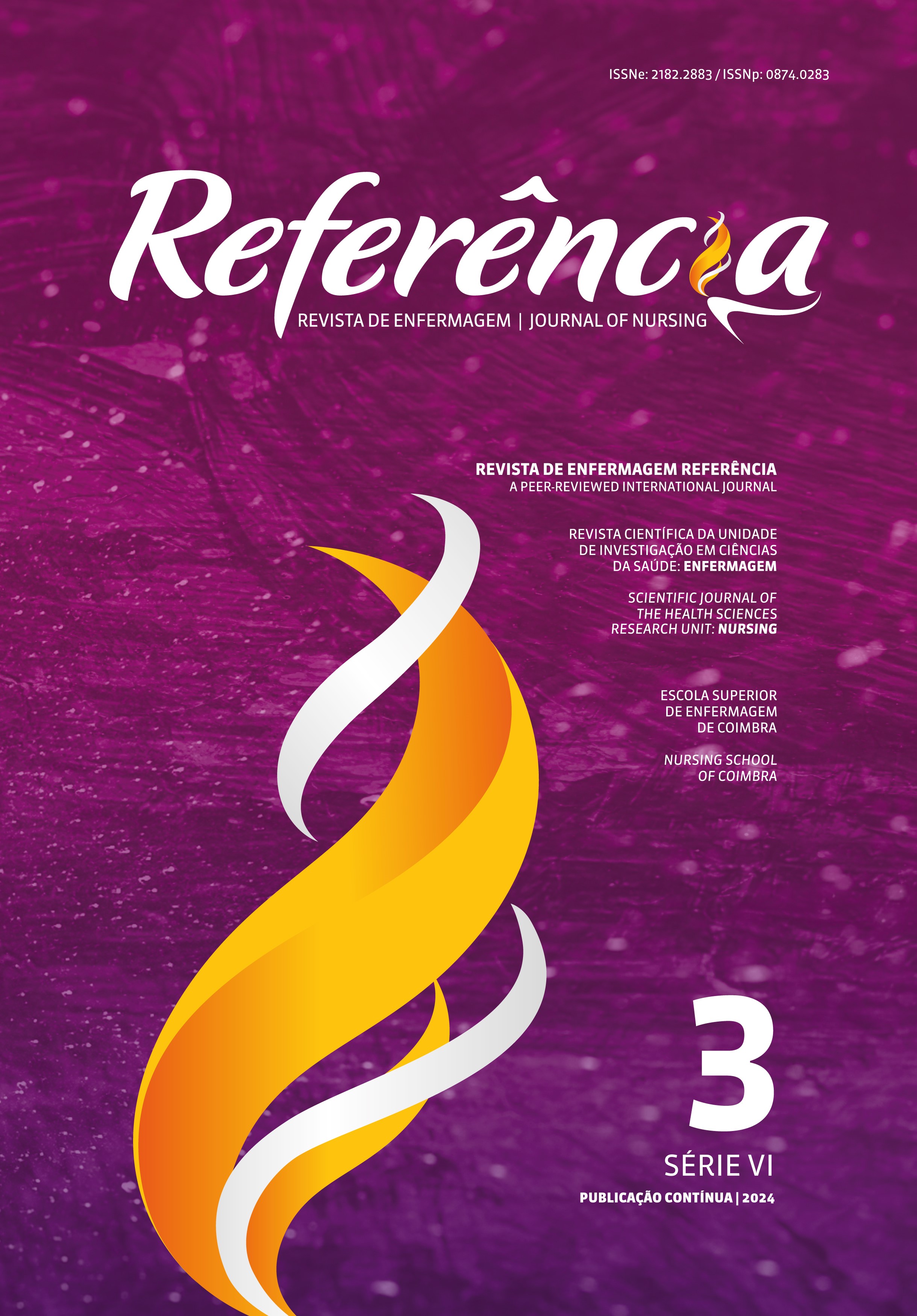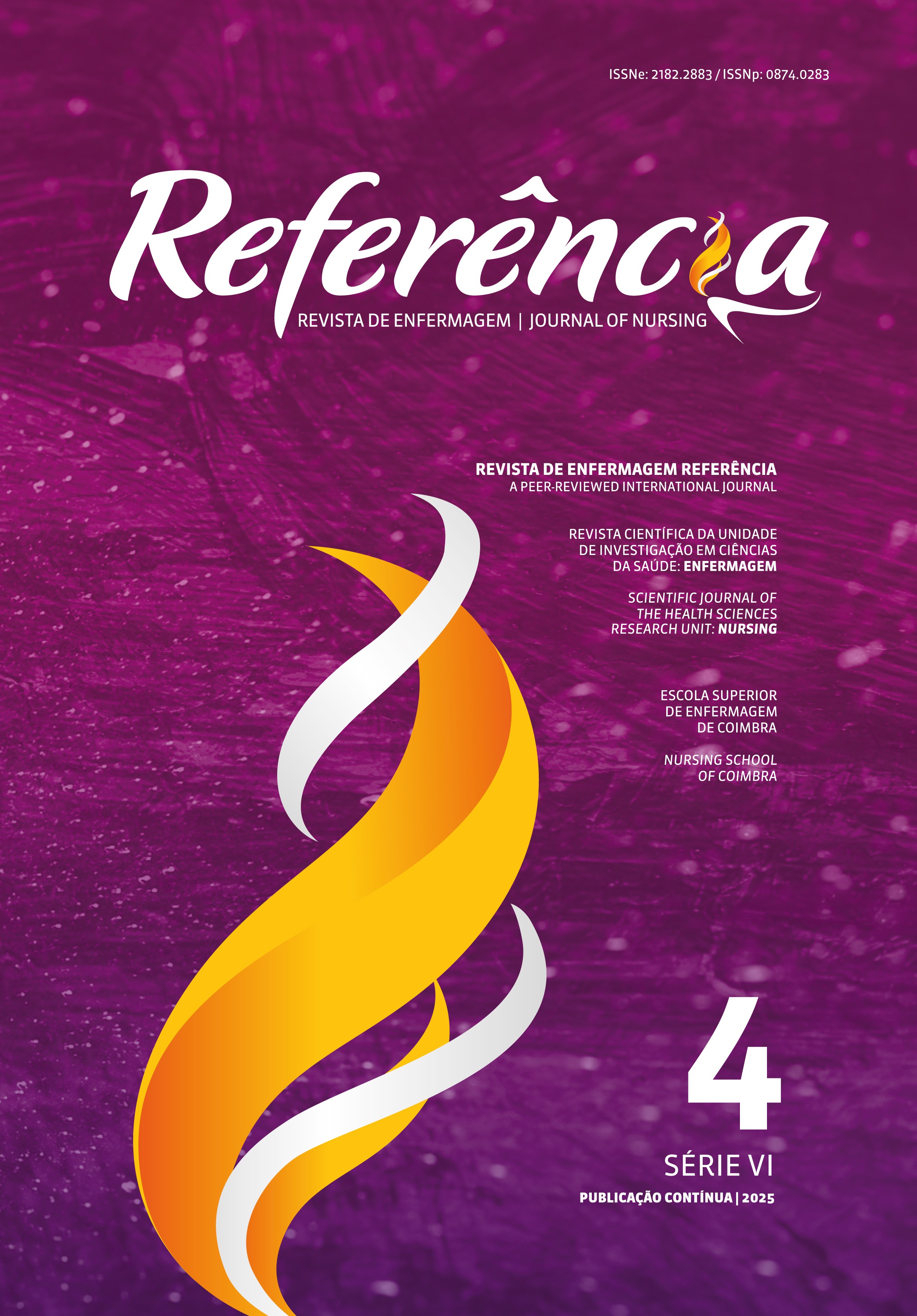Posvención: Percepciones de estudiantes y profesionales sanitarios sobre un escenario para la enseñanza basado en la telesimulación
DOI:
https://doi.org/10.12707/RVI24.71.36583Palabras clave:
aflicción, suicidio, entrenamiento simulado, estudiantes, profesionales sanitariosResumen
Marco contextual: Las percepciones de estudiantes y profesionales sanitarios sobre el diseño de una telesimulación sobre posvención contribuyen a evaluar su uso en la docencia sanitaria.
Objetivo: Comprender las percepciones de estudiantes y profesionales sanitarios sobre los factores relacionados con el diseño de un escenario para la enseñanza basado en la telesimulación sobre posvención.
Metodología: Estudio transversal con 60 participantes, estudiantes y profesionales de la salud, selecionados por muestreo no probabilístico de conveniencia. La recogida de datos virtuales se realizó mediante la Escala de Diseño de Simulación, instrumento de caracterización y evaluación del curso.
Los datos se analizaron mediante estadística descriptiva y regresión.
Resultados: Los participantes dieron puntuaciones medias más altas al factor realismo y más bajas a los factores apoyo y resolución de problemas. Hubo acuerdo sobre el impacto del feedback y la reflexión. La formación en psicología y los problemas con Internet se asociaron con el resultado del estudio.
Conclusión: Las percepciones de los participantes refuerzan las ventajas de la telesimulación en la enseñanza de la posvención, aunque muestran barreras que indican la necesidad de futuros estúdios sobre esta estrategia.
Descargas
Citas
Almeida, R. G., Mazzo, A., Martins, J. C., Pedersoli, C. E., Fumincelli, F., & Mendes, I. A. C. (2015). Validation for the Portuguese language of the Simulation Design Scale. Texto & Contexto Enfermagem, 24(4), 934–940. https://doi.org/10.1590/0104-0707201500004570014
Bartone, P. T., Bartone, J. V., Violanti, J. M., & Gileno, Z. M. (2019). Peer support services for bereaved survivors: A systematic review. Omega, 80(1), 137–166. https://doi.org/10.1177/0030222817728204
Costa, R. R., Medeiros, S. M., Coutinho, V. R., Veríssimo, C. M., Silva, M. A., & Lucena, E. E. (2020). Clinical simulation in cognitive performance, satisfaction and self-confidence in learning: A quasi-experimental study. Acta Paulista de Enfermagem, 33, eAPE20180123. http://dx.doi.org/10.37689/actaape/2020AO01236
Daly, K. A., Segura, A., Heyman, R. E., Aladia, S., & Slep, A. M. (2024). Scoping review of postvention for mental health providers following patient suicide. Military Medicine, 189(1-2), e90–e100. https://doi.org/10.1093/milmed/usac433
Dantas, E. S., Bredemeier, J., & Amorim, K. P. (2022). Survivors bereaved by suicide and the possibilities of postvention within Brazilian public health. Saúde e Sociedade, 31(3), e210496en. https://doi.org/10.1590/S0104-12902022210496en
Dias, A. A., Souza, R. S., Eduardo, A. H., Feliz, A. M., & Figueiredo, R. M. (2022). Validation of two clinical scenarios for simulation-based learning for the prevention and control of health care-associated infections. Revista Eletrônica de Enfermagem, 24, 1-16. https://doi.org/10.5216/ree.v24.70072
Faria, J. S., Marcon, S. R., Nespollo, A. M., Santos, H. G., Espinosa, M. M., & Oliveira, K. K. (2022). Attitudes of health professionals towards suicidal behavior: An intervention study. Revista de Saúde Pública, 56, 54. http://doi.org/10.11606/s1518-8787.2022056003320
INACSL Standards Committee, Hallmark, B., Brown, M., Peterson, D. T., Fey, M., & Morse, C. (2021a). Healthcare simulation standards of best practice professional development. Clinical Simulation in Nursing, 58, 5-8. https://doi.org/10.1016/j.ecns.2021.08.007
INACSL Standards Committee, Persico, L., Belle, A., DiGregorio, H., Wilson-Keates, B., & Shelton, C. (2021d). Healthcare simulation standards of best practice facilitation. Clinical Simulation in Nursing, 58, 22-26. https://doi.org/10.1016/j.ecns.2021.08.010
INACSL Standards Committee, Miller, C., Deckers, C., Jones, M., Wells-Beede, E., & McGee, E. (2021c). Healthcare simulation standards of best practiceTM outcomes and objectives. Clinical Simulation In Nursing, 1(58), 40–4. https://doi.org/10.1016/j.ecns.2021.08.009
INACSL Standards Committee, Persico, L., Belle, A., DiGregorio, H., Wilson-Keates, B., & Shelton, C. (2021d). Healthcare simulation standards of best practiceTM facilitation. Clinical Simulation in Nursing, 58, 22-26. https://doi.org/10.1016/j.ecns.2021.08.010
Kim, J. H. (2019). Multicollinearity and misleading statistical results. Korean Journal of Anesthesiology, 72(6), 558-569. https://doi.org/10.4097/kja.19087
McGill, K., Bhullar, N., Batterham, P. J., Carrandi, A., Wayland, S., & Maple, M. (2023). Key issues, challenges, and preferred supports for those bereaved by suicide: Insights from postvention experts. Death Studies, 47(5), 624–629. https://doi.org/10.1080/07481187.2022.2112318
Nascimento, J. D., Oliveira, J. L., Alves, M. G., Braga, F. T., Góes, F. D., & Dalri, M. C. (2020). Debriefing methods and techniques used in nursing simulation. Revista Gaúcha de Enfermagem, 41, e20190182. https://doi.org/10.1590/1983-1447.2020.20190182
Park, S., Hur, H. K., & Chung, C. (2022). Learning effects of virtual versus high-fidelity simulations in nursing students: A crossover comparison. BMC Nursing, 21(1), 100. https://doi.org/10.1186/s12912-022-00878-2
Pedrollo, L. F., Silva, A. C., Zanetti, A. C., & Vedana, K. G. (2022). Creation and validation of a high-fidelity simulation scenario for suicide postvention. Revista Latino-Americana de Enfermagem, 30, e3699. https://doi.org/10.1590/1518-8345.6034.3699
Rigby, R. A., & Stasinopoulos, D. M. (2005). Generalized additive models for location, scale and shape. Journal of the Royal Statistical Society: Series C (Applied Statistics), 54(3), 507-554. https://doi.org/10.1111/j.1467-9876.2005.00510.x
Ruckert, M. L., Frizzo, R. P., & Rigoli, M. M. (2019). Suicide: The importance of new postvention studies in Brazil. Revista Brasileira de Terapias Cognitivas, 15(2), 85-91. http://dx.doi.org/10.5935/1808-5687.20190013
Shneidman, E. (1973). Deaths of man. Quadrangle. Stubbe, D. E. (2023). When prevention is not enough: The importance of postvention after patient suicide. Focus, 21(2),168-172. https://doi.org/10.1176/appi.focus.20230003
Vatcheva, K. P., Lee, M., McCormick, J. B., & Rahbar, M. H. (2016). Multicollinearity in regression analyses conducted in epidemiologic studies. Epidemiology, 6(2), 227. https://doi.org/10.4172/2161-1165.1000227
Vedana, K. G., & Zanetti, A. C. (2019). Attitudes of nursing students toward to the suicidal behavior. Revista Latino-Americana de Enfermagem, 27, e3116. http://dx.doi.org/10.1590/1518-8345.2842.3116
Yasser, N. B., Tan, A. J., Harder, N., Ashokka, B., Chua, W. L., & Liaw, S. Y. (2023). Telesimulation in healthcare education: A scoping review. Nurse Education Today, 126, 105805. https://doi.org/10.1016/j.nedt.2023.105805






















